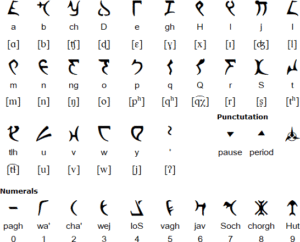There’s a lot more to stock than just photos and videos. There are plenty of other skills you can monetise by licensing it out for various uses.
Creating stock is not just for artistic types, either, though a degree of creativity is essential. Technical skills that are hard to develop are highly sought-after in the world of stock assets.
TL;DR
- Free – little to no cost to begin licensing stock content
- Passive Income – if you are successful, you can generate true and long term passive income
- Enjoyable – creating stock content is a great way to monetise your existing skills and hobbies
- Competitive – while there is a lot of competition in the market, you can still make good money by finding your own niche
- High Effort – it might take some time and a lot of work to see a significant return
What Is Stock Content?
In our last guide, we looked at how artists can make money by selling their works online. One suggestion we didn’t cover was using those skills to create stock illustrations and graphics. Depending on the type of illustrations you make, these could be used by app creators, magazines, shirt designers looking to sell using Print-on-Demand and a number of others.
Part of the reason why we separated the two is that they require subtly different skills. Certainly, they both rely on the creativity of the artist, but where one can use paints and pencils, stock graphic design really requires that you use Adobe Illustrator.
The resulting graphics might be used either as a full image to illustrate an abstract concept that can’t be expressed with a photo, or it might be just an element of a larger design. A silhouette of a person or people could be used in a company logo, a design for a shirt or an illustration of an article in a magazine – and that’s just the ways I’ve personally used them!
Part of the reason why these graphics must be created in Adobe Illustrator is that vector files are far more popular for stock purposes than other formats. With a vector, the graphic maintains the same resolution regardless of what size you use it at. It could be barely a handful of pixels across for a favicon on a website or several metres across, as it might be on a billboard. In either case, it should still be clear and sharp. That being the case, simple designs are often more successful than complex ones.
One benefit that graphic designers have over artists, when it comes to selling for stock, is the fact that it is easier to make subtle variations. Instead of needing to create distinctive works from scratch each time, you can increase the profit potential of your time by making slight variations on the same design. Using the silhouette example from above, you could have slightly different poses or different shading. While each individual pattern will get fewer sales, your overall portfolio is more likely to profit when the designer scouring their stock site of choice finds the perfect graphic for their needs among your collection.
Another application for the same skills is designing fonts. This takes an incredible amount of creativity because each letter of the alphabet – both uppercase and lowercase – as well as numbers and symbols need to be designed, being both distinctive while still being clear enough to be readable. Given the amount of work you will need to put into this and the comparatively limited number of potential customers you’ll have, this is perhaps not the most effective use of your time.
What if you’re not that kind of artists? What if you’re a musician, for example? Well, there’s no shortage of need for stock music, either. Video-makers are constantly looking for backing tracks that, while perfectly matching and even amplifying their footage, but which is not copyrighted.
The simple fact is that it is extremely rare for one person to have the skills and the time to create every aspect of their own content. Think about the needs of a YouTuber – they would perhaps be good enough at filming to be able to get their own footage, though they might miss things and seek video stock to fill in the gaps. Perhaps, if their content is generally just speaking to camera, they might rely on stock video to float over their own footage to both hide a cut and illustrate what they’re talking about. They would then need music to accompany their footage. They might need graphics to visually show complex information that might be confusing if just spoken. They might also want a unique font to make their graphics look a bit cooler. They’ll need further graphics for their channel branding, logo and profile pictures. They might also want graphics to make merchandising to supplement the meagre income they get from YouTube advertising. One YouTuber alone might need the services of at least three other stock content creators to supplement their own skill and time shortfalls, including four different types of stock graphics.
The opportunities don’t stop there. What if our theoretical YouTuber wants to build a website. Do they have the time and skills required to program one from scratch? Unlikely, and why bother when there are thousands of expert-built stock themes and templates they can use? And they’ll probably want to use some stock photos and icons to adapt the template to their needs. They might also want to add some special effects to their videos, so they will seek out stock After Effects templates.
Potentially, a content creator could make an entire business with just stock assets. And, with plenty of demand for all of these assets, it means there are opportunities to generate a good passive income by using your skills to create them.
How To Get Started Creating Stock Art
When it comes to getting started with selling any kind of stock, the approach we suggested for photos and videos applies to virtually every kind of stock asset, so it’s strongly recommended that you take a look at that guide for a bit more detail. However, we’ll summarise it here.
The biggest and most challenging part of making money out of your skills and hobbies by creating stock is figuring out what stock to create. It’s a highly competitive market, with a lot of creators out there, all of whom want a slice of the potential profits. With no cost to posting content onto stock sites and, if you make the right sort of stuff, no expiration date to it, the potential for long-term income is great and, therefore, very attractive.
In short, you need to find a niche. If you try to hit the most popular topics, you’ll be competing against so many other people that you will have to be either exceptionally gifted or exceptionally lucky to stand out and make enough money from your creations to justify your efforts. For example, you could spend hours designing a range of illustrations of maps – perhaps beautiful country outlines filled in with the flag of that particular nation – only to find that there are already hundreds of these already on every stock site. Your chances of selling even one are pretty remote, meaning those hours were spent rather unprofitably.
Of course, the flip side of that coin is targeting a niche that has very little competition, but also very few customers. You could spend hours creating a font for the Klingon alphabet, for example. While that’s certainly an impressive feat and one that few others will be especially likely to match, you’ll also be lucky if your efforts are rewarded with more than a few downloads from die-hard Star Trek fans.

The sweet spot is a niche that gets a lot of attention but is not hugely served with stock assets. Finding that niche is the challenge, and extensive research is the solution. You should not only check stock sites to see what there is, but also check the possible ways your stock asset might be used to see what people are seeking but not finding. If you create background music or sound effects, look on YouTube for videos covering niche topics that might not have a great reserve of assets in their niche. Check forums and online groups run by such content creators and look for inspiration there.
The alternative is to just do what you enjoy doing anyway, on the basis that the time can’t be said to have been “wasted” if you had fun doing it. However, bear in mind that this approach might not generate much in the way of passive income. Sure, any money you make from it is a pleasant bonus, but it probably won’t be an ample or reliable revenue stream.
With the research done, it’s simply a case of doing what you do best – creating the stock asset and uploading it to your stock site of choice.
Things to Consider when Creating Stock Content
Thanks to stock asset creation being a potentially enjoyable and profitable venture, there’s a huge amount of competition from all areas of the skill spectrum. Those who are especially good at what they do will certainly stand out, but even relative amateurs have the chance to earn some money. That being the case, making a steady passive income is really down to choosing your niche very carefully. Sadly, this might mean having to focus away from the niches that you are personally interested in.
While creating the right product for the right niche could potentially mean that a single asset will make you thousands of dollars, this is a profoundly unlikely occurrence. It’s far more common for stock creators to have massive portfolios of work. This means that it might take a lot of time and a lot of effort to get to the point where you are making a good passive income. However, as your portfolio expands, you will be able to see what makes money and what doesn’t, allowing you to narrow down your niches and focus on making more profitable assets.
It’s worth noting that those assets that require more skill and time to make generally also make more money. For example, a single stock photo may net you less than $1 per sale while a good website theme could earn $50 per sale – potentially more, if the sale includes a subscription for ongoing support. However, creating a photo takes a fraction of a second (not counting the editing and uploading time) while creating a website template can take two or three weeks. While it’s obviously essential to work to your own skills and interests, it’s also important to find the right balance of time, effort and earning potential.
How Much Does It Cost To Get Started Creating Stock Content?
Since uploading stock assets to the websites that sell them is free, there is no start-up cost. Of course, you will require the relevant equipment and software to create the assets, such as Adobe Illustrator, sound mixing desks, musical instruments and so on. However, since selling stock assets is generally a way to monetise an existing skill or interest, it’s fairly likely that you’ll already have these tools available to you anyway.
Learn more about Stock Content
If you are interested in learning more about Amazon FBA and how it can create you a passive income, check out these links:
Adobe Illustrator – Low Cost 12 month Subscription
Envato – you can sell all kinds of digital assets and art through the Envato platform
Millo – How to make money as an artist in 2020
unDraw – Open source illustrations
Freesound – Database of Creative Commons Licensed sounds
Shopify – How To Sell Art Online – The Complete Guide

